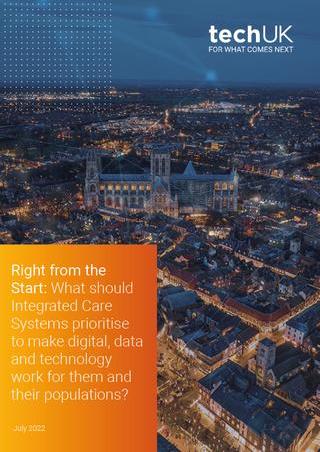Vocera: Reimagining nursing for the future: 6 ways to improve communication for nurses
Nursing holds a critical and unique place in the world’s healthcare infrastructure. Without nurses, patient care and safety would be at risk, but their impact is much greater still. The safety and well-being of communities, nations, and the world would be at risk without nurses, which is why we must protect them and the nursing profession.
The future of nursing is threatened today by many variables, including a staffing shortage that is beyond anything ever seen in the industry. In a survey by Nurse.org of 1,500 nurses worldwide from September to November of 2021, 80% of nurses said their units are inadequately staffed.[i]
Unfortunately, we cannot backfill our way out of the current crisis because we simply do not have enough nurses in the funnel. The World Health Organization estimates that by 2030, there will be a need for 36 million nurses practicing around the globe with a potential global shortage of 13 million.[ii]
To reverse these trends, we must, first, listen to nurses describe their experiences, and second, implement innovations to improve their working environment. At the center of both is better communication.
Communication: Every hospital’s foundation
Communication is at the heart of nursing work. When communication is difficult, everything slows down. When nurses must take extra steps, spend more time, and use cognitive resources searching for the right person or information, they lose valuable time and resources that could be used caring for their patients at the bedside.
As vacancies leave gaps in shifts and add additional pressures to already fatigued and stressed nurses , the healthcare industry must find ways to use technologies to simplify clinical workflows and processes to improve patient care and safety. Nurses are asking for help.
Here are six ways to address nurses’ calls for innovation to improve their work environment:
- Simplify and unify communication workflow: Streamlining workflows for nurses starts with improving communication. A single, unified communication platform is essential.
- Connect mobile care teams: In response to staffing pressures, many hospitals are turning away from primary nursing and moving to team nursing where one nurse manages a team of healthcare assistants. For such a team to function effectively, effective communication and workflows designed for mobility are imperative.
- Transform the hospital’s systems into nurse extenders: A nurse extender is a technology, tool, process, or protocol that extends a nurse’s reach and influence. Start with the patient in the bed. Many hospitals use smart, connected beds that can be integrated with a communication system that notifies the correct caretaker when a patient is in a compromised state and at risk for injury.
- Innovate care models: Two of the most time-consuming tasks a nurse has are admission assessment and discharge teaching. Hospital leaders should consider enabling virtual nurses to assist with admissions and discharges using video.
- Identify tasks to offload from the nurse: Nurses should not have to spend their valuable time performing tasks that patients can do for themselves, provided the patient has the cognitive capabilities to perform these functions. Hospitals can give patients the means to document their own intake and output, blood sugar, ambulation in the room, and the like.
- Empower nurses to manage the patient and family experience: Keeping patients’ families informed and at ease can be a time-consuming task. Give nurses greater control of this communication by equipping them with mobile technology that helps automate the process as part of their rounding process.
Nurses remain the largest work group in the healthcare system and their impact on the safety and well-being of patients is immeasurable. Difficult times have presented never-before challenges. Nurse leaders must listen and respond to nurses’ appeals to change the work environment and innovate care models to improve systems, technologies and processes that will ensure quality patient care.
The future of nursing is in peril if we ignore them.
You can download the CNO report here.
[i]Woods, Anne Dabrow. WHO: State of the World’s Nursing 2020. Lippincott Nursing Center Blog. 9 Apr 2020. https://www.nursingcenter.com/ncblog/april-2020/who-state-of-the-worlds-nursing-2020.
[ii] Gooch, Kelly. “World could be short 13 million nurses by 2030, report finds.” Becker’s Hospital Review. 25 Jan 2022. https://www.beckershospitalreview.com/nursing/world-could-be-short-13-million-nurses-by-2030-report-finds.html
Check out our new podcast and ICS report
The techUK podcast: Innovation in place-based care
In this episode we explore the concept of ‘place’ in care, the principles behind it, the impact of Covid-19 on care delivery, prospects for innovation following the introduction of Integrated Care Systems, examples of industry best practice, and where listeners can go to learn more about ‘place’ and innovation in care.
We were joined by Helena Zaum (Social Care Lead at Microsoft and Chair of techUK’s Social Care Working Group), Scott Cain (Associate at the Connected Places Catapult) and Hannah Groombridge (Healthcare Engagement Manager at Person Centred Software).
This discussion forms part of techUK’s Digital Place Week 2022 activity and features on our recently-launched Social Care Innovation Hub.

Read techUK's latest flagship report, released on Thursday's 'Health and Wellbeing' day:
Right from the start: What should Integrated Care Systems prioritise to make digital, data and technology work for them and their populations?

